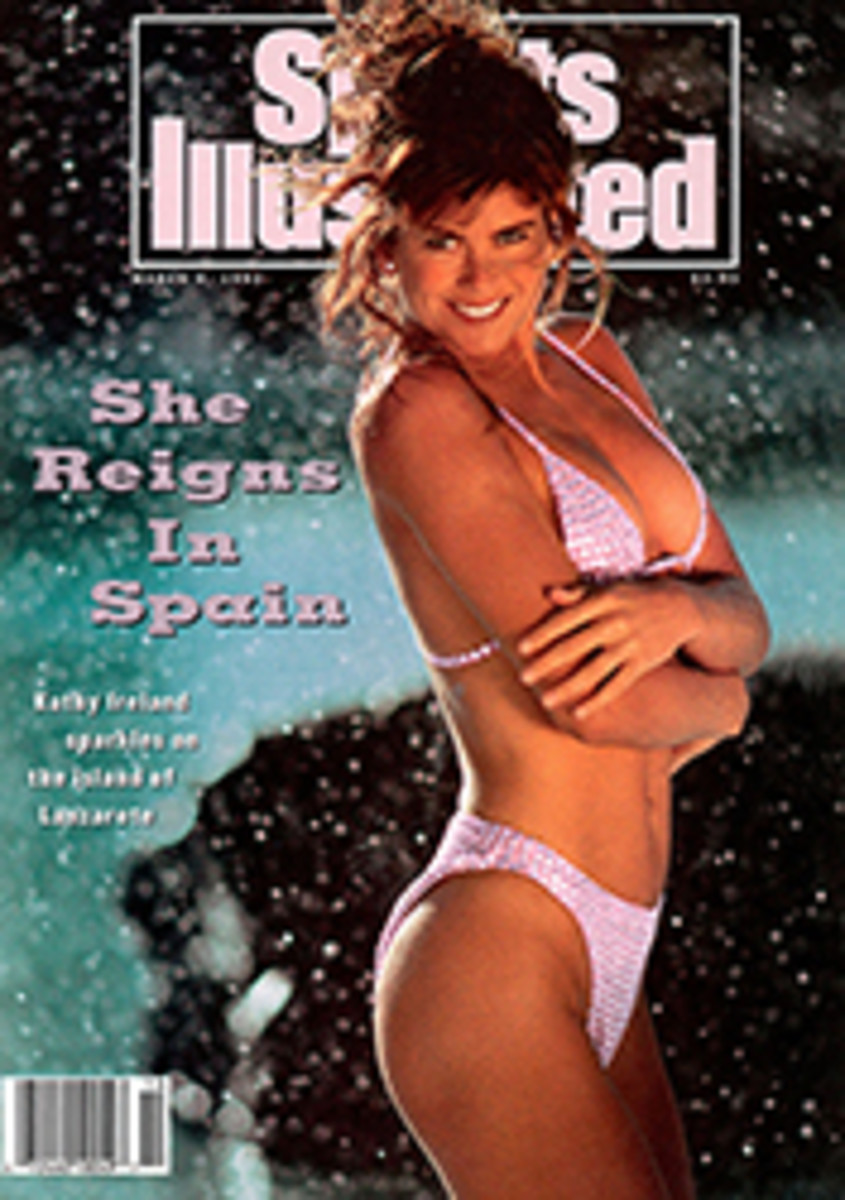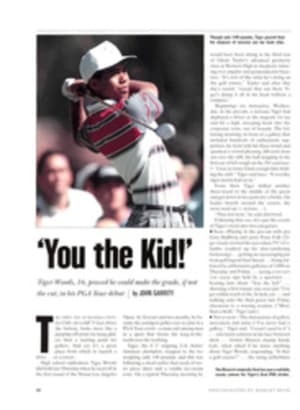
Hot Properties
At a time when many an American business is struggling, one anchored in sports is a rousing success. Consider NFL Properties, the NFL's marketing and licensing subsidiary, which has been putting together one great year after another.
How good is NFL Properties? Some 350 manufacturers are licensed to produce more than 2,500 items bearing NFL logos, and their gross sales in such merchandise for fiscal 1991 are expected to have exceeded $2 billion. According to Frank Vuono, vice-president in charge of retail licensing, that's well over 30% better than the previous year's sales, more than 70% above the 1989 total and about 700 times the gross just six years ago. The league also has 125 corporate sponsors, and together they will pay an estimated $50 million this year to use the league's logo in their marketing campaigns.
NFL Properties is a privately held firm made up of three divisions—retail licensing, marketing and promotions, and publishing. Industry sources estimate that the company, which has 130 employees, will have revenues of about $140 million this year, most of it coming from retailing and marketing and promotions. And those sources expect business to continue growing at an annual rate of 15% or 20%.
One of the biggest growth areas is fashion, which is part of the retail division. NFL Properties dresses players, coaches and fans in a wide range of sportswear. NFL apparel is now sold in most of the country's major retail stores—Sears and Bloomingdale's are but two—and it is hotter than two-a-days in August. "Team-licensed products are saving the retail business," says Dan Stock, vice-president of Zubaz, which manufactures a popular and colorful line of zebra-striped sportswear. Adds Dan McElwain, a marketing programs manager for athletic footwear and apparel at J.C. Penney, which has been selling NFL gear for more than 20 years: "This type of apparel has suddenly become very fashionable. I eat dinner in a nice restaurant, and I see people wearing Dallas Cowboy sweaters. That's how they want to dress today."
Of course, there's more to retailing than selling clothes. NFL Properties has put league and team logos on bowling balls, comic books, doghouses and bags of potato chips, and most of these wares are selling very well indeed. Want a golf umbrella with the San Francisco 49er emblem? How about a Los Angeles Raider pool cue? A Green Bay Packer license-plate frame?
"The people at Properties are savvy and aggressive marketers," says Stuart Crystal, marketing director for Starter Corp., the top maker of NFL apparel. "They know what they want, and they go out and get it."
Marketing and promotions has also seen its share of revenue growth. In 1986 corporate sponsors paid somewhere between $25,000 and $750,000 apiece for promotional rights; this year they are shelling out from $75,000 to $5 million. NFL Properties has also begun to help NFL players pursue off-field business opportunities and currently exclusively represents 125 players for retail licensing efforts, according to executive vice-president John Flood.
Publishing doesn't contribute nearly as much to the bottom line, but it does well enough. National advertising in NFL stadium programs was sold out this past season, and the 1992 Super Bowl program, which was published by Properties, carried more than 100 pages of ads.
NFL Properties was started in 1963 to promote the NFL and protect the league's logos and trademarks, as well as to make money selling novelties like bobble-head dolls, T-shirts and hats. Business grew steadily, if not spectacularly. By 1969 NFL Properties was generating about $1.5 million in gross revenues from corporate sponsorships and from the sale of licensed products. Ten years later the figure had jumped to $100 million, and by 1986 it had hit $500 million. But the league's commissioner, Pete Rozelle, thought NFL Properties could do better. "Properties had always been more public relations than anything else," says Norman Bra-man, owner of the Philadelphia Eagles and chairman of the owners' committee that oversees the subsidiary. "But then Pete decided to take the restraints off. He wanted Properties to be more of a business, to realize its potential."
"Frankly, we were underdeveloped," says John Bello, who has been president of NFL Properties since 1988. "But we started working on different ideas, different promotions, different programs, different ways of selling our products. And then things took off."
One of the highest fliers is a line of apparel and equipment that NFL Properties created in 1986 called Pro Line. It consisted of not only the same helmets, jerseys and warmup jackets that the players used but also the sweaters, hats and parkas that coaches, trainers and ball boys wore as they paced the sidelines. Licensees passed out samples of the nonuniform items to the teams, and suddenly Pro Line products were being modeled before national television audiences a couple of times a week. The fans quickly took notice. "We put a sweater on Joe Walton [then the New York Jet coach] for a Monday night game, and we got 5,000 calls about it within the next few days," Bello says. "People wanted to know where they could get one for themselves. We knew then that we had a winner." According to vice-president Vuono, after only a few years on the market, Pro Line now constitutes about 30% of NFL Properties' retailing business.
NFL Properties has been successful for a number of reasons, some of which are as much a result of good timing and luck as they are of skillful management. Sales took off when the market for team-licensed products of most major sports exploded in the late 1980s, and people were snapping up anything emblazoned with a team logo. It has also helped that a major part of the NFL's business is done in the fourth quarter, which begins with back-to-school buying binges, peaks with Christmas and generally ends with a healthy flow of revenue.
But some credit is due the people who work at NFL Properties, beginning with Bello. Bello worked as a product manager at General Foods and later in brand management at Pepsi-Cola before he joined the company in 1979. When he became president nine years later, he sought specialists in retailing, others who were veterans in marketing and advertising and still others who had spent years in publishing. His sales people have been getting NFL-licensed products into the major retail stores, and he has employees monitoring the hot teams, players and trends in search of more marketing phenoms like the Refrigerator.
NFL Properties has scored on virtually every drive, but while the licensees seem generally happy, more than a few worry about the number of products and companies that are now involved. Says the head of one firm: "I hope Properties doesn't license many more companies, because I don't want them to kill the golden goose." NFL Properties also faces a few legal battles. It has been named in several suits filed by the NFL Players Association, which in one case is questioning whether Properties may handle group licensing rights for the players. The decertified union claims it is the only organization that has the exclusive right to do that. Flood disagrees.
Another problem is that some of the company's best customers are inner-city gang members. Many of them have taken to dressing in NFL team hats, jackets and T-shirts—the Raiders are among the most popular teams—and using the logos and colors as a way of distinguishing the different gangs. In fact, the connection between NFL gear and gangs has become so strong that several municipalities have banned the wearing of team sportswear in their schools. Several baseball and hockey teams' colors and insignia have also been favored by certain gangs.
"It's a tough situation," says NFL Properties director of communications Rusty Hawley, "and we are trying to deal with it." Last fall the league kicked off a program called CHILL, in which rapper KRS-1 began speaking to youth groups around the country. "He is telling people that NFL merchandise is meant to be-a message of goodwill and not a uniform of war and gangs," says Hawley. The league has also issued trading cards that decry gang activity, and it consults frequently with school boards and other groups that have difficulties with gangs wearing NFL-licensed gear. The league has even asked prospective expansion groups to be mindful of possible gang appropriation as they develop logos and colors and not to do anything that might be construed as encouraging gang identification with those logos and colors.
But such concerns won't prevent the company from moving into new markets. "I see us getting more and more into packaged goods," Vuono says. "Ultimately we will have a line of food products." NFL Properties is also trying to target women, who now make up 42% of the league's fan base. A line of NFL-licensed women's apparel called Spirit was introduced earlier this year, and it is being sold in test markets. Says Vuono: "I learned a while ago that if we want to keep growing, we have to keep up with the times."
PHOTO
KEN LEVINE/ALLSPORT USA
Raider loyalists are among the many fans who have snapped up team jerseys and caps.
PHOTO
MITCHELL LAYTON
Buffalo boosters seek coverage; the Broncos' owner, Pat Bowlen, eyes his team.
PHOTO
HEINZ KLUETMEIER
[See caption above.]
PHOTO
RICH FRISHMAN
Fang time: Rod Svetich is a Seattle stalwart. Wilson's exotic balls sport NFL logos.
PHOTO
BILL BALLENBERG
[See caption above.]
PHOTO
SCOTT ROBINSON
Some schools have banned team caps such as these.

